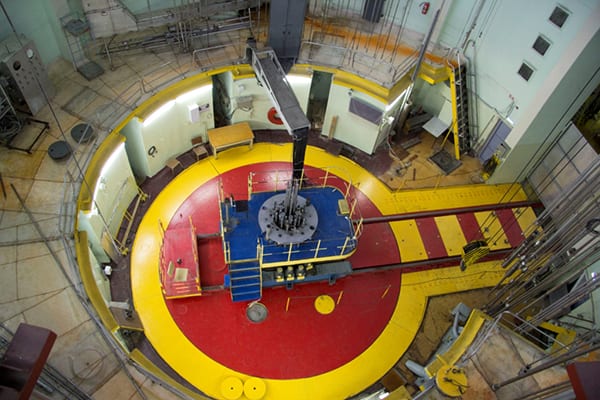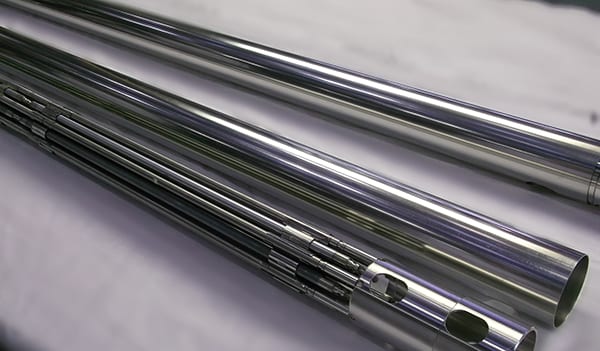Russia Completes First-Phase Testing of Nuclear Accident-Tolerant Fuel
Credit to Author: Sonal Patel| Date: Thu, 31 Oct 2019 12:41:56 +0000
The post Russia Completes First-Phase Testing of Nuclear Accident-Tolerant Fuel appeared first on POWER Magazine.
Russia has completed the first phase of nuclear accident-tolerant fuel (ATF) reactor testing at a government research facility. The achievement paves the way for ATF testing at a Russian commercial nuclear plant, which could begin in 2020.
TVEL Fuel Co. of Rosatom, a company that provides nuclear fuel to 72 reactors in 14 countries, including the Russian fleet, told POWER on Oct. 31 that first-phase testing at the MIR research reactor at the State Research Institute of Atomic Reactors in the Ulyanovsk Region involved two experimental ATF fuel assemblies with VVER (a Russian designed water-cooled, water-moderated reactor) and pressurized water reactor (PWR) fuel rods.
The fuel rods were loaded into water loops with “relevant water-chemical modes” at the MIR research reactor in January 2019, said TVEL. Each fuel assembly contains 24 fuel elements with four different combinations of cladding and fuel matrix materials. “Fuel pellets were made of traditional uranium dioxide, as well as uranium-molybdenum alloy with increased density and thermal conductivity. Zirconium alloy with a chromium coating and chromium-nickel alloy were either used as the rod cladding material,” it said.

Two experimental accident-tolerant fuel assemblies with VVER and PWR fuel rods were loaded into the water loops with the relevant water-chemical modes at Russia’s MIR research reactor in January 2019. Courtesy: TVEL
After both fuel assemblies were removed from the reactor following the first irradiation cycle, a preliminary examination performed onsite by a team from TVEL’s Moscow-based research arm, Bochvar Institute for Inorganic Materials, showed no changes in the fuel rod geometry or damage to the cladding surface. “Several fuel rods of each fuel assembly were extracted for further post-irradiation studies, the results will help to determine and choose the optimal combination of materials,” it said.
TVEL said it continues to test new non-irradiated samples at the MIR reactor, but it is also preparing to expanding the testing program to a commercial reactor in 2020. “In particular, we plan to load a batch of fuel assemblies with several ATF fuel rods into one of [Russia’s] operational VVER-1000 reactors,” said Alexander Ugryumov, vice president for Research and Development at TVEL JSC. “Further on, we may consider testing of some other materials for fuel pellets and rod claddings.”
The tests of the first Russian-made experimental ATF fuel assemblies are an important aspect of the country’s drive to improve financial performance, optimize management, and improve cost efficiency of its vast 30-GW nuclear fleet. As POWER reported in March, Russia has embarked on a concerted effort to increase power produced by its existing fleet through uprates and new fuels. The improvements would be another selling point for Russia’s drive to expand its portfolio of foreign construction projects, which in 2018 exceeded $130 billion.
TVEL also pointed to ATF’s significant safety aspects. “ATF is nuclear fuel resistant to severe beyond-design basis accidents at [nuclear plants] with the loss of coolant in the reactor,” it noted. “Even in case of heat removal failure in the core, ATF is supposed to keep its integrity for a long enough time without a zirconium-steam reaction inducing hydrogen release. ATF is of critical importance for further elevating the integral safety and reliability of nuclear power.”

Each fuel assembly contains 24 fuel elements with four different combinations of cladding and fuel matrix materials. Fuel pellets were made of traditional uranium dioxide, as well as uranium-molybdenum alloy with increased density and thermal conductivity. Courtesy: TVEL
TVEL’s efforts to develop ATFs are also notable because they are in line with similar developments by major nuclear fuel makers around the world. Testing of ATF concepts developed by Westinghouse, Framatome, and GE’s Global Nuclear Fuel (GNF) has already begun at commercial reactors in the U.S. under a program spearheaded by the Department of Energy. The DOE on Sept. 10 told POWER that all three vendors “are roughly two years ahead of schedule in terms of testing their fuels in commercial reactors.”
GNF in March 2018 installed iron-chromium-aluminum fuel cladding material known as “IronClad” and coated zirconium fuel cladding known as “ARMOR” at Southern Co.’s Edwin I. Hatch Nuclear Plant near Baxley in southeastern Georgia. This April, Westinghouse installed EnCore Fuel—including chromium-coated zirconium coated-cladding fuel rods and uranium silicide pellets—at Exelon’s Byron 2 reactor in Illinois. Also in April, Framatome completed installation of four GAIA lead fuel assemblies containing enhanced ATF (EATF) pellets and cladding at Southern Co.’s Alvin W. Vogtle Electric Generating Plant’s Unit 2 in Georgia. Over the next year, GNF is also expected to begin testing of the IronClad and ARMOR concept at Exelon’s Clinton nuclear plant in Illinois.
—Sonal Patel is a POWER senior associate editor (@sonalcpatel, @POWERmagazine)
The post Russia Completes First-Phase Testing of Nuclear Accident-Tolerant Fuel appeared first on POWER Magazine.